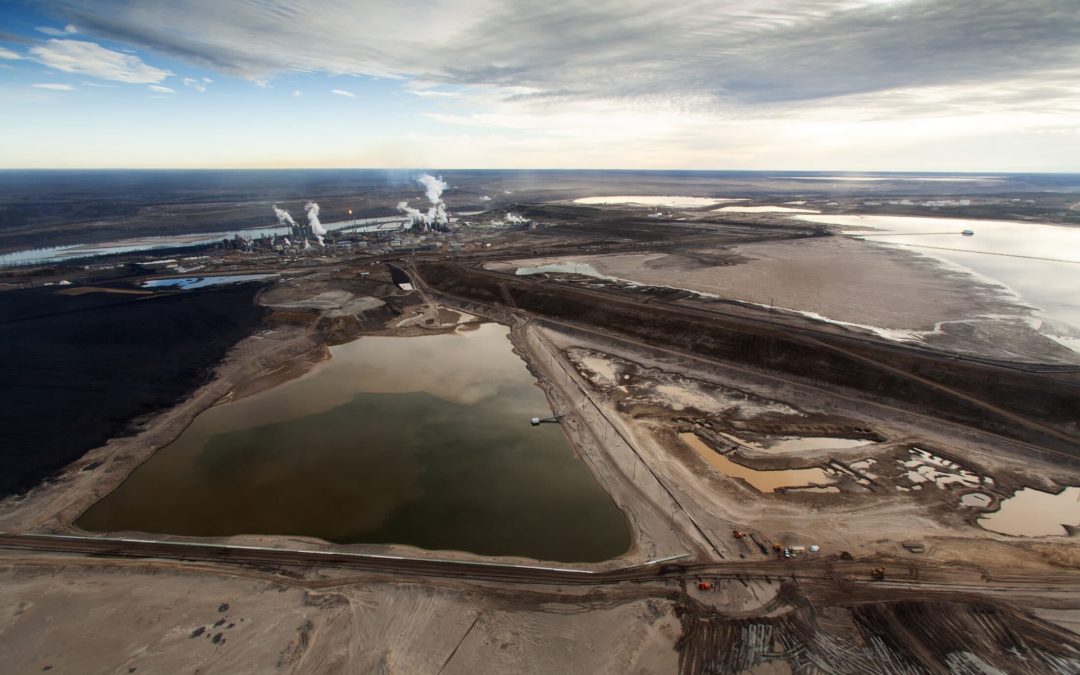SOURCE: The Narwhal
DATE: December 14, 2020
SNIP: There are more than a trillion litres of toxic oilsands waste stored in tailings ponds near Alberta’s Athabasca River — and they’re leaking.
Yes, we now have “scientifically valid evidence” that the ponds meant to contain toxic fluids are leaking, according to a years-long probe backed by the governments of Canada, the U.S. and Mexico.
Not only that, the Commission for Environmental Cooperation report noted there is evidence tailings fluids “may circumvent [containment] systems and contaminate aquifers” and end up in the groundwater.
“It really affirmed what my community has been saying for quite a long time,” Melody Lepine, director of government and industry relations for the Mikisew Cree First Nation, told The Narwhal.
“It’s making its way to the groundwater, so is it making its way to our surface water? Is it making its way to the foods and wildlife that we rely on for subsistence purposes, our traditional foods? Are we consuming it?”
The answers to these questions are largely unknown, which is a big part of the problem. [D]espite years of uncertainty, the federal government still hasn’t created regulations for the release of tailings fluids into waterways.
The total area of the tailings ponds has increased from around 25 square kilometres in 1985 to over 250 square kilometres in 2016, nearly double the size of the city of Vancouver.
As for the amount held in the tailings ponds — well, that’d be around 1.25 trillion litres as of 2018. That’s up almost 200 billion litres from 2014. Wondering how much 1.25 trillion litres is? That’d be enough drinking water for a million people for 1,700 years.
As the factual record notes, “freshly produced [tailings fluid] is a substance acutely toxic to aquatic organisms.”
Part of the mix, known as fine fluid tailings, remains suspended in water and can take decades to slowly settle to the bottom of a body of water.
Tailings ponds are essentially designed to leak. They’re not lined, but are surrounded by collection ditches that divert leaked water into “seepage ponds.” Those seepage ponds may or may not be lined. Water that makes its way into the seepage ponds is then pumped back into the tailings pond. There are also “interceptor wells,” which are wells designed to catch any fluid that seeps past the ditches.
The problem occurs when those technologies just aren’t enough.
Jule Asterisk, project manager with Keepers of the Athabasca, said companies urgently need to improve their systems.
“They should immediately move to full containment, or put down complex compacted clay liners and plastic liners and, you know, manage their water properly,” she told The Narwhal.
According to the report, information from Syncrude and Suncor showed “consistent evidence of seepage of [tailings fluids] from tailings ponds into groundwater at certain monitoring wells that are close in proximity to surface water, including tributaries to the Athabasca River.”
Specifically, the report notes that Syncrude’s own calculations show approximately 785 million litres of tailings fluid had “migrated” past the collection ditches in 2017. That’s equivalent to enough drinking water for a million people for a full year.
The report found indications industry and government have known tailings ponds leak since the early days of oilsands development in the Athabasca region, citing a study dating back to 1973.
In Canada, water law is generally within the purview of the provincial governments, unless the water contains fish or is navigable — then jurisdiction overlaps with the federal government.
In this case, the Athabasca River does contain fish, as do its tributaries.
Those pollution-prevention provisions prohibit the “unauthorized deposit of deleterious substances in waters frequented by fish.”
In other words, no dumping things like tailings fluid into the Athabasca River.
The way companies operate tailings ponds now is “on its face unlawful,” Martin Olszynski, an associate professor of law at the University of Calgary and a consultant on the factual record, told The Narwhal.
There’s a catch though — those leaks or dumps can be authorized. The federal government would just need to write up some regulations that permitted it.

